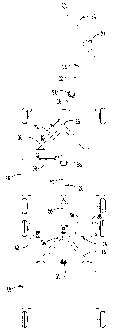Some of the information on this Web page has been provided by external sources. The Government of Canada is not responsible for the accuracy, reliability or currency of the information supplied by external sources. Users wishing to rely upon this information should consult directly with the source of the information. Content provided by external sources is not subject to official languages, privacy and accessibility requirements.
Any discrepancies in the text and image of the Claims and Abstract are due to differing posting times. Text of the Claims and Abstract are posted:
| (12) Patent: | (11) CA 2272672 |
|---|---|
| (54) English Title: | DUAL IMPLEMENT HITCH |
| (54) French Title: | ATTACHE DE REMORQUAGE POUR MATERIEL JUMELE |
| Status: | Expired and beyond the Period of Reversal |
| (51) International Patent Classification (IPC): |
|
|---|---|
| (72) Inventors : |
|
| (73) Owners : |
|
| (71) Applicants : |
|
| (74) Agent: | SMART & BIGGAR LP |
| (74) Associate agent: | |
| (45) Issued: | 2003-04-15 |
| (22) Filed Date: | 1999-05-25 |
| (41) Open to Public Inspection: | 2000-11-03 |
| Examination requested: | 2000-09-07 |
| Availability of licence: | N/A |
| Dedicated to the Public: | N/A |
| (25) Language of filing: | English |
| Patent Cooperation Treaty (PCT): | No |
|---|
| (30) Application Priority Data: | ||||||
|---|---|---|---|---|---|---|
|
A pair of implements such as hay windrow fluffers are interconnected by
a hitch assembly allowing for positioning the fluffers in a side-by-side field
position or trailing transport position. A tongue assembly on the second
implement is connected to the tongue assembly on the first implement when
the implements are in a field position. An extendable linkage interconnects
the implements and extends laterally when the implements are in a field
position and parallel to the line of travel when the implements are in the
transport position. The linkage has vertical posts at opposite ends which
connect to the tongue assemblies of the implements to allow the linkage to
extend over the front first implement when in the transport position.
Note: Claims are shown in the official language in which they were submitted.
Note: Descriptions are shown in the official language in which they were submitted.

2024-08-01:As part of the Next Generation Patents (NGP) transition, the Canadian Patents Database (CPD) now contains a more detailed Event History, which replicates the Event Log of our new back-office solution.
Please note that "Inactive:" events refers to events no longer in use in our new back-office solution.
For a clearer understanding of the status of the application/patent presented on this page, the site Disclaimer , as well as the definitions for Patent , Event History , Maintenance Fee and Payment History should be consulted.
| Description | Date |
|---|---|
| Time Limit for Reversal Expired | 2011-05-25 |
| Letter Sent | 2010-05-25 |
| Grant by Issuance | 2003-04-15 |
| Inactive: Cover page published | 2003-04-14 |
| Inactive: Final fee received | 2003-01-28 |
| Pre-grant | 2003-01-28 |
| Notice of Allowance is Issued | 2002-11-15 |
| Letter Sent | 2002-11-15 |
| Notice of Allowance is Issued | 2002-11-15 |
| Inactive: Approved for allowance (AFA) | 2002-10-31 |
| Inactive: Entity size changed | 2002-01-30 |
| Amendment Received - Voluntary Amendment | 2000-11-24 |
| Application Published (Open to Public Inspection) | 2000-11-03 |
| Inactive: Cover page published | 2000-11-02 |
| Amendment Received - Voluntary Amendment | 2000-10-06 |
| Letter Sent | 2000-10-04 |
| Request for Examination Received | 2000-09-07 |
| Request for Examination Requirements Determined Compliant | 2000-09-07 |
| All Requirements for Examination Determined Compliant | 2000-09-07 |
| Inactive: Filing certificate - No RFE (English) | 1999-10-06 |
| Request for Priority Received | 1999-09-08 |
| Inactive: First IPC assigned | 1999-07-12 |
| Inactive: IPC assigned | 1999-07-12 |
| Inactive: Office letter | 1999-06-29 |
| Inactive: Filing certificate - No RFE (English) | 1999-06-22 |
| Application Received - Regular National | 1999-06-22 |
There is no abandonment history.
The last payment was received on 2002-04-17
Note : If the full payment has not been received on or before the date indicated, a further fee may be required which may be one of the following
Patent fees are adjusted on the 1st of January every year. The amounts above are the current amounts if received by December 31 of the current year.
Please refer to the CIPO
Patent Fees
web page to see all current fee amounts.
| Fee Type | Anniversary Year | Due Date | Paid Date |
|---|---|---|---|
| Application fee - small | 1999-05-25 | ||
| Request for examination - small | 2000-09-07 | ||
| MF (application, 2nd anniv.) - small | 02 | 2001-05-25 | 2001-04-30 |
| MF (application, 3rd anniv.) - standard | 03 | 2002-05-27 | 2002-04-17 |
| Final fee - standard | 2003-01-28 | ||
| MF (patent, 4th anniv.) - standard | 2003-05-26 | 2003-04-14 | |
| MF (patent, 5th anniv.) - standard | 2004-05-25 | 2004-04-16 | |
| MF (patent, 6th anniv.) - standard | 2005-05-25 | 2005-04-14 | |
| MF (patent, 7th anniv.) - standard | 2006-05-25 | 2006-04-18 | |
| MF (patent, 8th anniv.) - standard | 2007-05-25 | 2007-04-10 | |
| MF (patent, 9th anniv.) - standard | 2008-05-26 | 2008-04-10 | |
| MF (patent, 10th anniv.) - standard | 2009-05-25 | 2009-04-20 |
Note: Records showing the ownership history in alphabetical order.
| Current Owners on Record |
|---|
| DAN D. ROWSE |
| RON A. ROWSE |
| Past Owners on Record |
|---|
| None |